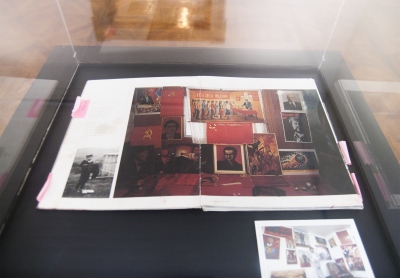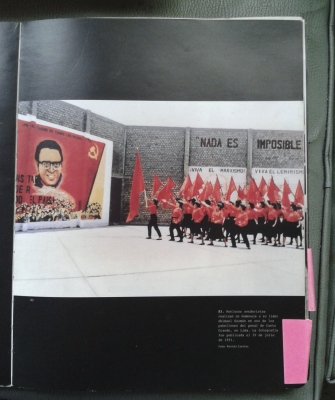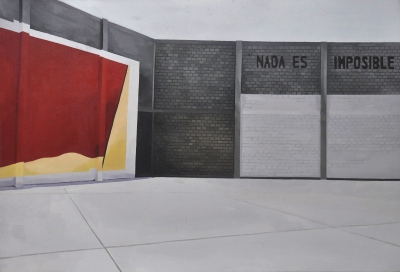The Trophy is the same
2012, 2015
oil on canvas
109 x 160 cm
referential images of where the propaganda was found and where it is now (police museum)
Paintings that are based on the Peruvian propaganda images of the subversive group Sendero Luminoso (Shinning Path).
The first image is of the photojournalist Vera Lentz (June 1, 1990) at the house of Monterrico Norte. In that house was found the most valuable visual information propaganda of the group and their leader. This served as a source of information for a better understanding of how the subversive group functioned, and served as clues to the subsequent capture of Abimael Guzman (leader). The objects were arranged by the police like a regular display, looking more like a tribute or religious altar, than a confiscation. I have reproduced this image in a painting in which I took away all vestiges of Shining Path propaganda. What happens is that when propaganda and gifts of Shining Path disappears, also the trophies of the police.
This shows that the power and value is not only on the image itself, but in the information it contains.
Photo of the book Yuyanapaq. Para recordar. Visual images of the conflict in Peru, between 1980-2000. Idehpucp. 2003. This book, was part of the visual research made by the Comission of Truth and Reconciliation. Photograph in the book by Vera Lentz.
The title of this book says: "to remember".
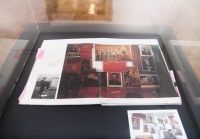
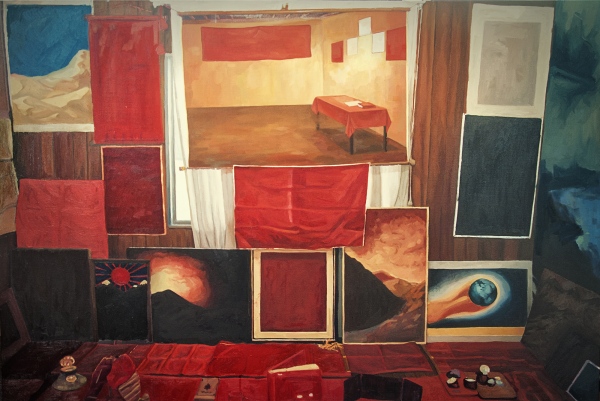
The Trophy is the same 1
2012
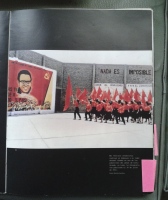

Photo of the book Yuyanapaq. Para recordar. Visual images of the conflict in Peru, between 1980-2000. Idehpucp. 2003. Image left archivo caretas. Image right Ana Cecilia Gonzales-Vigil.
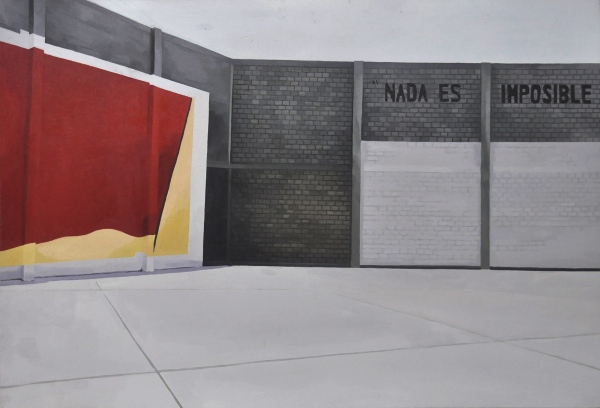
The Trophy is the same 3
2015

El otro, el mismo / The other, the same
2012
”I have never dared to believe anything with absolute certainty (...) when asked if I am liberal, if I am social democrat , I tell them, will have to wait to death, only then you will know” Eduardo Punset
The war that began more than thirty years ago in our country, shows us, as a unresolved and complex society, full of simultaneities. Filled with gaps.
It is through images as we remember. Although the images are representations of reality or fantasy, during the civil war, these images were able to change our perception of the facts, they were manipulated in detail to make us change, think, feel, live differently. Almost without we realize it. They were used as evidence in court, as clues, as weapons, as demagogic resources and as tools of terror. But it was also thanks to them, that 20 years ago it was possible to capture Abimael Guzman. That is why it is crucial for me to study this information for a better understanding of our past, and not to revive it in the present.
For many of us who did not live in full awareness the deployment and the beginning of the civil war, all that remains for us is the information in the images, the stories and versions. With time, we realize that they are all we know, versions of others, which are misinterpreted over time.
“nothing changes as much as the past” Anonymous
Our education is so designed as binary. The simple facts are often opposed, a switch is on or off, a person can be alive or not, etc.. Yet life is more complex. The fundamental units of reality are made of information and does not work in a way as simple as binary, but also in a way that to be or not to be, can be and not be, both.1
We can then, release from the images displayed, simultaneous opposing concepts: win / loss ; reveal / hide ; original / copy ; reality / representation ; presence / absence ; good / evil ; right / left ; life / death, etc.
What this exhibition seeks is not to reaffirm the obvious, but rather reveal the simultaneities coexisting in the images with which we interpret the past. It is an invitation to admit, recognize and embrace uncertainty and contradictions wich we live in.
1. According to quantum physics, a particle does not have a specific position or power, until the moment when an observer attempts to measure it, and it is only then, when the observer receives the information that a particle is in a determinated state.
El otro, el mismo. Galerie L'imaginaire, Alianza Francesa de Lima. 2012
"el trofeo es el mismo" has been exhibited also at the Centro Cultural Inca Garcilaso of the Foreign Affairs Ministry of Perú.
